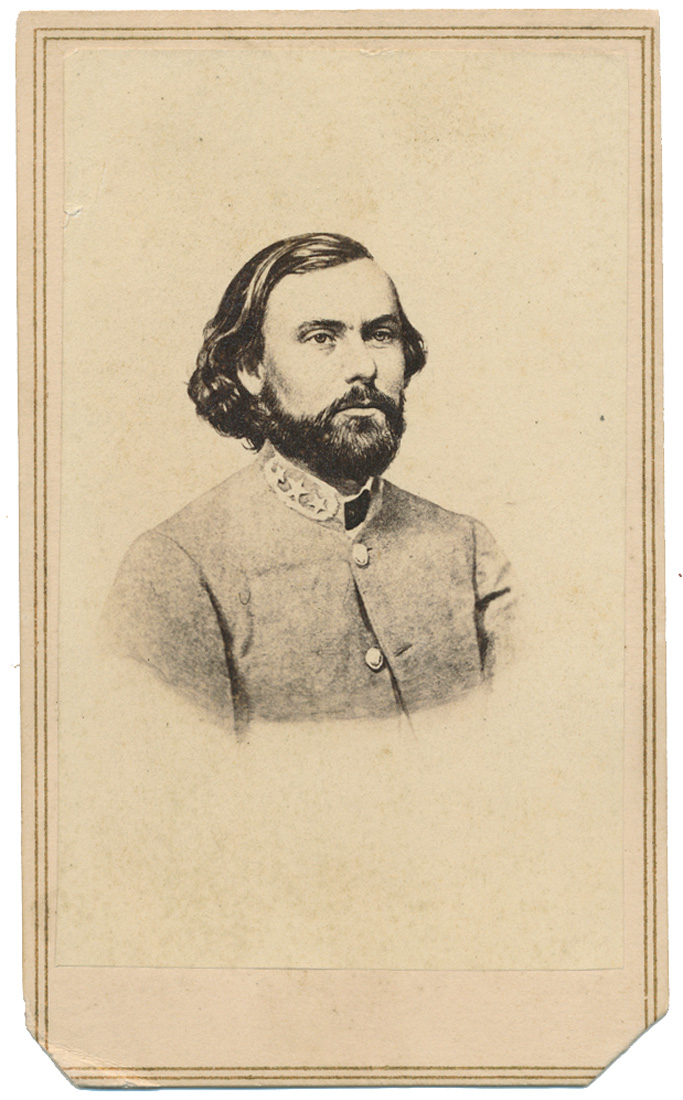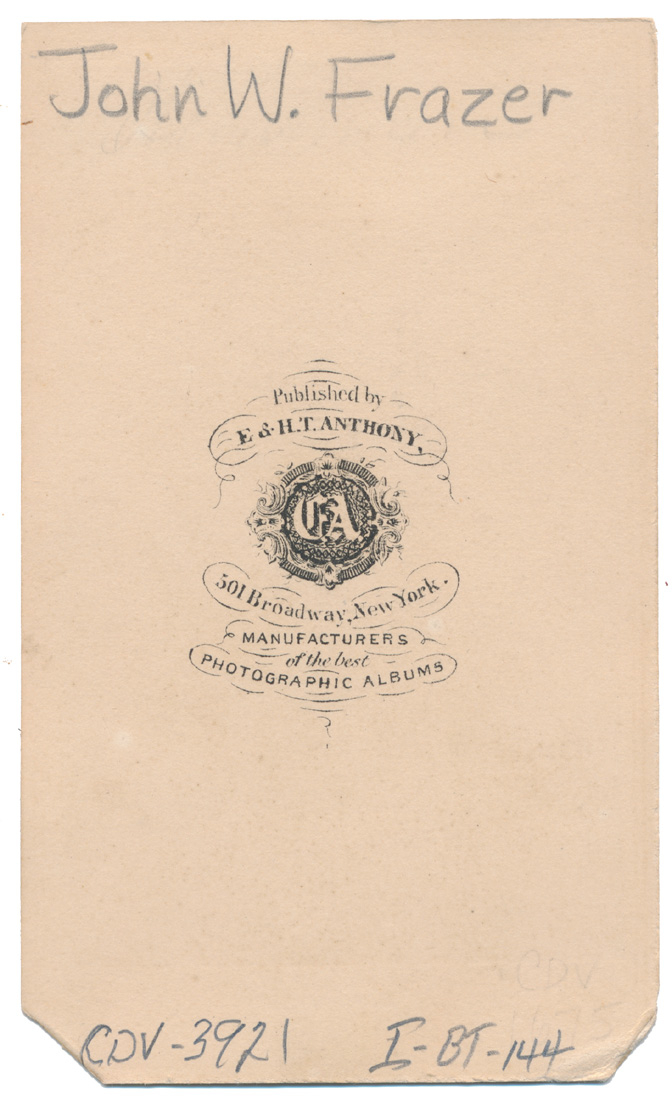site search
online catalog
CDV OF C.S. GENERAL THOMAS C. HINDMAN

Hover to zoom


$450.00 SOLD
Quantity Available: None
Item Code: 1138-144
Mis-identified in pencil on the reverse as C.S. Gen. John W. Frazer.
Image is a vignette bust view of Hindman from the chest up. He wears a single-breasted coat with the insignia of a Confederate general clearly visible on the collar.
Contrast is good. Bottom corners of mount are trimmed. Photographer’s backmark, E. & H.T. Anthony, New York. From the collection of the late William A. Turner.
Thomas Carmichael Hindman was born on January 28, 1828 in Knoxville, Tennessee. In 1841, the family moved to Mississippi, but when he was old enough, Hindman went east to study at the Classical Institute in Lawrenceville, New Jersey.
During the war with Mexico he joined the Second Mississippi Volunteer Infantry, but saw little action as his regiment was mostly assigned garrison duty. This did not stop Hindman from advancing through the ranks, and he mustered out at the end of the war as a lieutenant.
After the war, Hindman began his career as a lawyer and became involved in politics. In 1854, he was elected as a Democrat to the Mississippi House of Representatives, after having to defend his honor in duels against several of his rivals.
In 1856 Hindman moved to Helena, Arkansas, setting up a law practice for a time with future Confederate General Patrick Cleburne. In 1857, Hindman married Mary Biscoe, daughter of a wealthy planter. They would eventually have five children.
In 1858, Hindman ran successfully for a seat in the U.S. House of Representatives, where he served two terms. With the election of Abraham Lincoln as President in 1860, Hindman resigned his office and urged Arkansas to secede. Hindman set his sights on the Confederate Congress, but he failed to attain a seat there. Instead, he raised the Second Arkansas Infantry and became its colonel.
Promoted to the rank of brigadier general in September of 1861, Hindman took command of a brigade in the Army of Mississippi at Corinth. During the Battle of Shiloh on April 6, 1862, Hindman's horse was struck by an artillery shell but he suffered only minor wounds, and earned a promotion to major general.
In 1862, Hindman was transferred to Arkansas to command the Trans-Mississippi Department. He ruled the region with an iron hand, declaring martial law and incurring the wrath of the local populace. The Confederate government subsequently removed him from command, allowing him control only over the Arkansas district.
Late 1862 saw Hindman moving his forces into northwest Arkansas against an occupying Union army. For two days, December 7 and 8, Union and Confederate soldiers clashed at the Battle of Prairie Grove, Arkansas, neither side seeming to gain an advantage. Finally forced to withdraw his troops for lack of supplies, Hindman conceded a strategic defeat. Discouraged by this failure, he requested a transfer, and went to serve on a Court of Inquiry in Mississippi.
Hindman was eventually appointed to a division in the Army of Tennessee at Chattanooga in July of 1863. Despite having major differences with the commander of the army, General Braxton Bragg, Hindman fought bravely in the Battle of Chickamauga in Georgia, where he was wounded, and the Battle of Chattanooga, Tennessee in November of 1863.
Hindman's final battle of the war was at Kennesaw Mountain, in Georgia on June 27, 1864. It was during this engagement that he received a serious wound that partially blinded him, and he left the army to join his family in Texas, where they had taken refuge from the Union occupation of Arkansas.
In 1866 he was indicted by an Arkansas court for his war activities, and was unable to get a pardon from President Andrew Johnson. Hindman and his family escaped to Mexico, where he practiced law. He was finally able to return to Arkansas in 1868.
Hindman became an outspoken advocate of conservative politics and African American suffrage, which made him many enemies. On September 28, 1868, an assassin shot and killed him through a window at his home in Helena, Arkansas. No one was ever arrested for the crime.
Hindman is buried in Maple Hill Cemetery, Helena, Arkansas. [ad/jet] [ph:L]
~~~~~~~~~~~~~~~~~~~~~~~~~~~~~~~~~~~
THIS ITEM, AS WITH ALL OTHER ITEMS AVAILABLE ON OUR WEB SITE,
MAY BE PURCHASED THROUGH OUR LAYAWAY PROGRAM.
CLICK HERE FOR OUR POLICIES AND TERMS.
THANK YOU!
Inquire About CDV OF C.S. GENERAL THOMAS C. HINDMAN
Most Popular
Historical Firearms Stolen From The National Civil War Museum In Harrisburg, Pa »
Theft From Gravesite Of Gen. John Reynolds »
Selection Of Unframed Prints By Don Troiani »
Fine Condition Brass Infantry Bugle Insignia »
Large English Bowie Knife With Sheath 1870’S – 1880’S »
Imported (Clauberg) Us Model 1860 Light Cavalry Officer's Saber »
featured item
CONFEDERATE CLOVERLEAF PIKE
A very good, unmarked example of the striking Confederate “cloverleaf” pike formerly in the collections of the Texas Civil War Museum. The nickname obviously derives from the trefoil spearhead with a long central blade widening out for the lower… (1179-1659). Learn More »


